2021 Trek Slash
Test Location: Crested Butte, Colorado
Test Duration: 3 months
Size Tested: ML
Build Overview (Trek Slash 9.9 X01):
- Drivetrain: SRAM X01
- Brakes: SRAM Code RSC
- Fork: RockShox ZEB Ultimate
- Shock: RockShox Super Deluxe Ultimate Thru Shaft
- Wheelset: Bontrager Line Elite 30 Carbon
Wheel Size: 29”
Travel: 160 mm rear / 170 mm front
Blister’s Measured Weight (as built, w/o pedals): 32.25 lbs / 14.63 kg
MSRP: $3,499 – $8,999 ($7,999 as tested)
Reviewers:
- Luke Koppa: 5’8”, 155 lbs / 173 cm, 70 kg; Ape Index +1; Inseam 31” / 79 cm
- Dylan Wood: 5’11”, 155 lbs / 180 cm, 70 kg; Ape Index +0.5; Inseam 32” / 81 cm
- Eric Freson: 5’10”, 165 lbs / 178 cm, 75 kg; Ape Index +1.5; Inseam 31″ / 79 cm
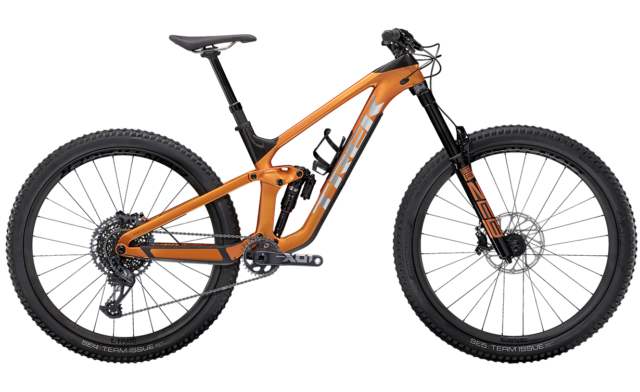
Intro
Just a couple of years ago, our reviewer Noah Bodman called the 2018 Trek Slash one of the best all-round Enduro bikes he’d ridden.
But in the world of mountain bikes, a couple of years feels more like a decade, given how quickly brands have been changing bike geometry, suspension, components, and almost everything else we use to ride. The Slash that Noah reviewed had been essentially unchanged since it was released in the 2017 model year, so many people have been eagerly waiting to see what would come next.
This September, Trek provided those people with an answer when they released the all-new, 2021 Slash.
Trek says their two main goals when redesigning the Slash were to (1) “enhance the Enduro race capability of the bike” and (2) “preserve the ultimate Trail rider experience.”
We’ve now had three reviewers on the Slash and have updated our initial review. First, we’ll dive into what Trek changed on the Slash to accomplish those two goals, how the new bike’s design compares to the rest of the crowded Enduro 29er category, and then discuss our on-trail impressions.
The Frame
Aesthetically, the 2021 Slash looks very similar to the previous version, as well as many of Trek’s other bikes. It maintains most of the clean, fairly straight lines throughout the frame and still uses a similar version of Trek’s ABP, 4-bar suspension linkage. That said, there are a lot of noteworthy differences with the newest Slash that might not be obvious at first glance.
First and foremost, the 2021 Slash gives you 160 mm of rear travel and is designed around a 170 mm fork, while the previous version had 150 mm of rear travel and a 160mm-travel fork.
The Slash is still available in either a fully aluminum frame or fully carbon frame, with the two alloy builds designated with a single digit in their name (Slash 7, Slash 8) while the five carbon-frame builds are designated with decimal points (e.g., Slash 9.7, Slash 9.8, & Slash 9.9). However, while the old Slash’s geometry and some of its features differed between the alloy and carbon models, the 2021 Slash keeps pretty much all of the frame features and geometry the same, whether you opt for alloy or carbon. That’s great news for those who don’t feel like going the carbon route.
One of the most exciting new features is the frame’s integrated storage in the down tube, and the fact that it’s standard on both the carbon and alloy Slash. Similar to Specialized’s SWAT box and the down tube on the carbon Trek Fuel EX, the new Slash lets you open a little “hatch” on the down tube so you stash a tube, tool, burrito, or whatever other little items in the frame, and not on yourself.
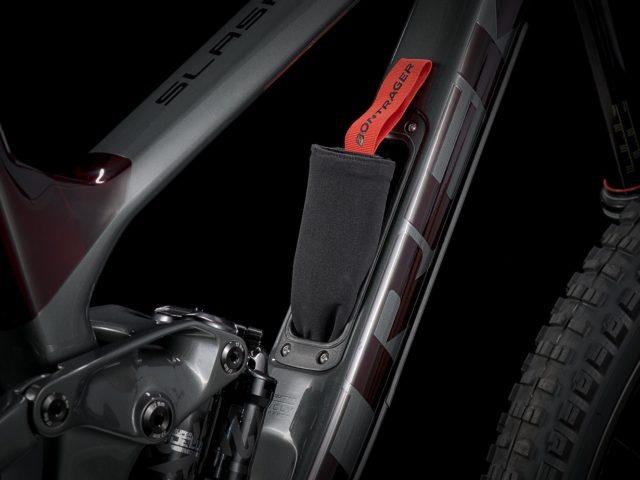
That little hatch on the down tube also serves as a mounting point for a water bottle cage, and Trek says all sizes of the 2021 Slash will fit a water bottle within the front triangle. Our size ML fits a 20-oz bottle quite easily. Cables are routed internally on both the alloy and carbon 2021 Slash, and they’ve been very quiet so far.
One of the more polarizing features of several Trek bikes is their “Knock Block” system. On the old Slash, this was essentially a keyed headset that prevented the front wheel from turning past roughly 58° to either side. On that bike, the down tube ran straight from the head tube to the bottom bracket, which Trek said let them get a more ideal strength-to-weight ratio from the frame. It also meant the fork could bash into the down tube without the Knock Block system during a crash, an ultra-tight turn, or if you finally decided it was time to learn barspins.
The 2021 Slash features what Trek is calling “Knock Block 2.0.” In its stock configuration, it still prevents the wheel from turning all the way around, but you can now turn the bars 72° to either side, as opposed to 58° on the old version. The 2021 Slash’s new, slightly curvier down tube also means it has enough clearance for the fork’s crown, and given that, Trek made Knock Block 2.0 removable, and it will now work with “standard” stems that aren’t Knock Block specific. Given that there’s no longer a physical conflict with a straight down tube, Trek says the primary purpose of Knock Block 2.0 on the 2021 Slash is to help prevent wear on the top tube and cables from pulling out.
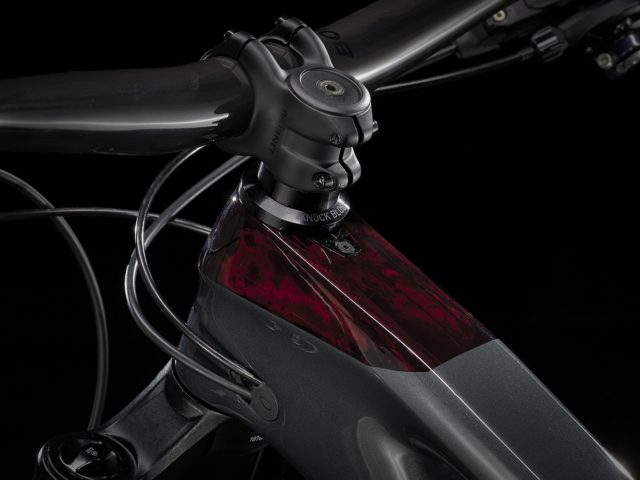
While it ditches the “Straight Shot” down tube of the last version, the 2021 Slash is still touted as being light and strong, with Trek claiming a stated weight of 2450 grams for the carbon frameset (we’re working on confirming which size that weight is for). Our size ML Slash 9.9 X01 weighed in at 32.25 lbs / 14.63 kg without pedals, which isn’t exceptionally lightweight for a high-end, 160/170 mm bike, but also not particularly out of the ordinary for a long-travel 29er.
One cool feature on the 2021 Slash that we don’t see on too many other bikes is its massive down tube protector. Running from the bottom bracket to just a few inches shy of the head tube, the dual-density pad should keep the down tube looking fresh for longer, particularly for people who often shuttle their bikes. And as would be expected, the new Slash also features some protection around the chainstay.
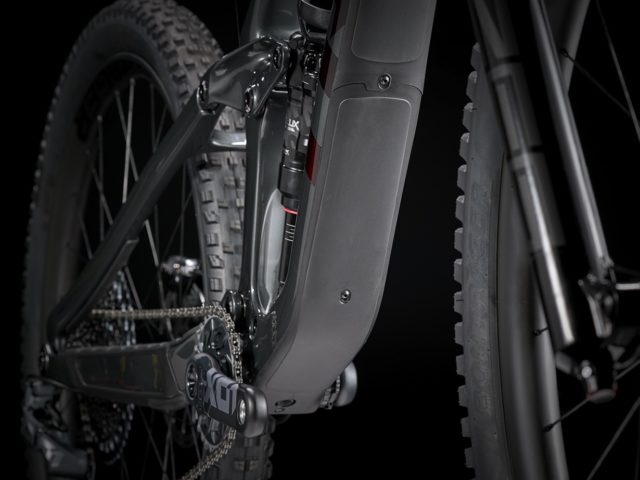
Speaking of the bottom bracket, the 2021 Slash comes with a BSA 73 one that’s got threads in it, rather than the press-fit BB on the old version. This should equate to less creaking and easier service. The new Slash also gets a larger, 34.9mm-diameter seat tube to accommodate the increasingly popular droppers of that diameter (including the new 34.9 mm Bontrager Line Elite spec’d on the higher-end Slash builds).
The Slash uses 110×15 mm hub spacing up front and 148x12mm out back, which is pretty standard, and Trek says the max rear tire size is 29”x2.5”. Other misc. specs include a rear brake mount that fits 180 mm rotors directly and fit up to 220 mm rotors, the ability to run chainring sizes from 28-tooth to 34-tooth, and stated dropper post insertion depths ranging from 205 mm on a size Small to 310 mm on a size Large.
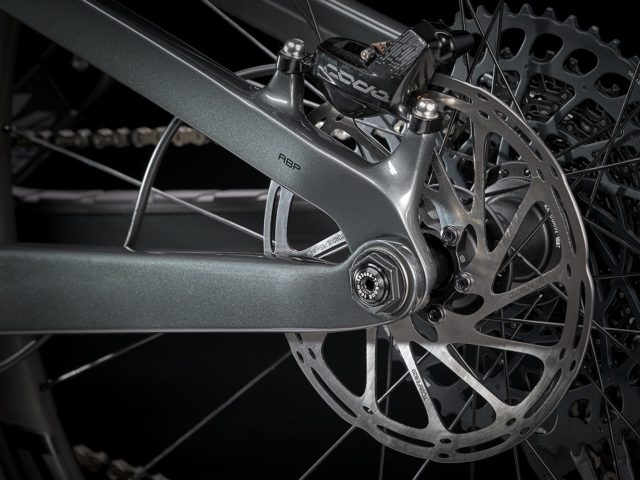
Suspension Design & New RockShox Super Deluxe Ultimate Thru Shaft
The 2021 Slash’s overall suspension linkage is still pretty similar to the previous Slash, using a version of Trek’s 4-bar “ABP” linkage. They’ve been using this general design for years, and a few of our reviewers have particularly been fans of how active the ABP linkage tends to stay under hard braking.
Like the old version, most 2021 Slash builds come with a special version of a RockShox rear shock that features the exclusive-to-Trek “Thru Shaft” design, but again, there are some notable differences.
First, the 2021 Slash’s shocks no longer feature Trek’s special “RE:aktiv” tune, which essentially relied on speed-sensitive damping and was meant to help the shock stay firm during low-speed forces (e.g., pedaling) while opening up during bigger impacts. Trek says they made this change because they felt a shock without the RE:aktiv tune was better suited to the demands of modern, high-speed Enduro races, which are becoming more and more like multi-stage DH races.
Second, several of the 2021 Slash bikes (carbon frameset, 8 build, 9.8 builds, & 9.9 builds) come with a special version of the RockShox Super Deluxe Ultimate, rather than the special RockShox Deluxe RT3 on the old Slash.
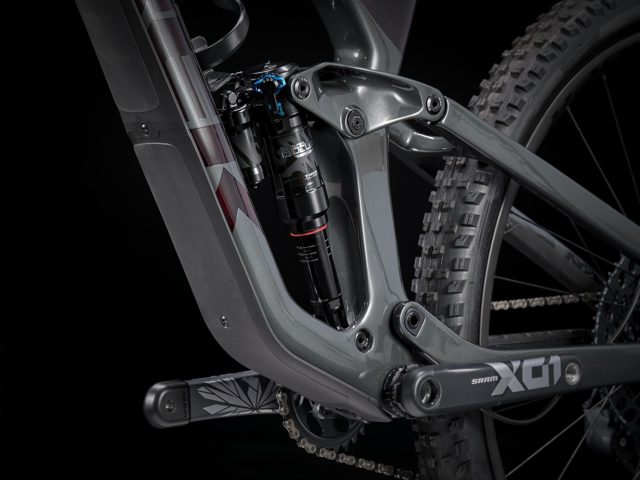
So, what’s so “special” about these shocks? Well, the Thru Shaft design itself is exclusive to shocks on Trek bikes, and was something that Noah really liked about the old Slash’s shock. After swapping between the two, he found the Thru Shaft shock made the bike feel much smoother and more sensitive over small chatter compared to when he swapped to a regular Super Deluxe shock. (Noah already went into a lot of detail regarding Thru Shaft in his review of the old Slash, so I’d check that out if you want to get more into the weeds about how it actually works.)
While Thru Shaft itself isn’t new, the Super Deluxe Ultimate on the 2021 Slash is. Its most notable new, exclusive feature is a 3-position switch (the bright-blue knob on the shock) that’s meant to specifically change how the suspension is affected by rider input (i.e., slower-speed forces created by the rider pushing down on the bike), without affecting damping during higher-speed impacts that come up from the trail. In simpler terms, it lets riders quickly switch between three preset low-speed-compression settings.
The “0” setting is supposed to be the baseline, general-trail-riding setting that you’d use in most cases. The “–” setting decreases the amount of low-speed compression, which Trek says makes more sense on steeper and rougher trails where the rider’s weight is biased more toward the front of the bike, and not the rear. Then the “+” setting adds more low-speed compression, meant for smoother, flow-style trails where you want a more supportive platform for pushing into berms and off jumps.
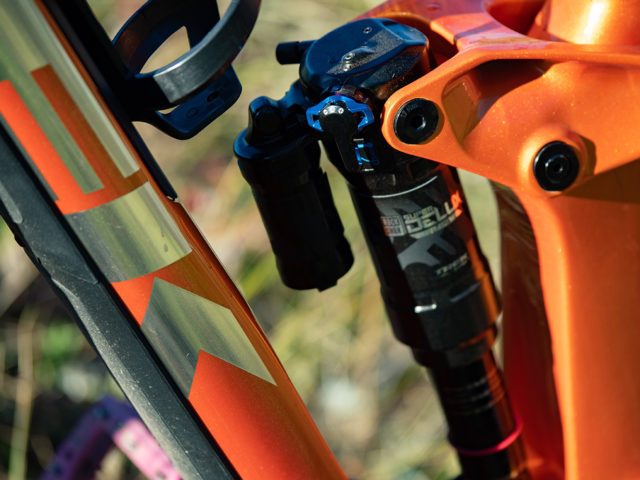
This new 3-position switch is not a “climb” switch or a lockout lever — the Super Deluxe Ultimate Thru Shaft has a separate, 2-position lever that you can use to fully lock out or fully open the shock. The lockout lever is situated directly over the 3-position switch on the shock.
Aside from that new 3-position LSC adjustment, the Super Deluxe Ultimate Thru Shaft on the 2021 Slash also features a larger, tunable negative air spring, which is meant to make the shock more progressive and supportive near the end of its travel, without losing the small-bump and mid-stroke sensitivity supposedly offered by the Thru Shaft design. You can also add volume spacers to both the negative and positive air springs to fine-tune the shock, though the Super Deluxe Ultimate Thru Shaft comes stock without any spacers inside.
RockShox also tweaked the positioning of the dials and switches on the Super Deluxe Ultimate Thru Shaft, putting them on the left side for easier access and they also added numbers to the single rebound-adjustment dial to make it easier to know what setting you’re on.
Now, I just used a lot of words to talk specifically about the exclusive Super Deluxe Ultimate Thru Shaft shock that comes on most of the 2021 Slash builds. However, many people will be happy to know that you can still fit several other shocks on the Slash, including the 2021 Fox Float X2, 2021 Fox DHX2, Fox DPX2, RockShox Super Deluxe Coil, and most inline shocks without piggyback reservoirs. Trek says the regular, non-Thru-Shaft Super Deluxe won’t fit due to where its lockout lever is placed. They say that the leverage ratio of the new bike is progressive enough that most coil shocks are compatible, though I’d recommend checking with them just to be sure you won’t have any clearance issues with the coil shock you’re considering.
Trek is talking a pretty big game about this new Thru Shaft shock, so we’re very curious about (1) how well it’ll live up to Trek’s various claims, (2) how useful the new 3-position LSC switch actually is, and (3) how it compares to other downhill-oriented air shocks that don’t feature Thru Shaft, but that do feature more finely adjustable compression and rebound settings.
The Builds
As of publishing this First Look, the 2021 Slash is available as an alloy frameset ($2,199), carbon frameset ($3,999), or in 7 full builds ranging from the $3,499 Slash 7 to the $8,499 Slash 9.9 XTR.
For all of the carbon builds, you can also customize the color / paint of the frame through Trek’s Project One program, which adds $500 to the cost.
At $3,999, the Slash 8 in particular seems like a pretty solid deal: you get the special Thru Shaft shock, RockShox Lyrik RC fork, full SRAM GX drivetrain, and SRAM Code R brakes.
We’re testing the high-end Slash 9.9 X01 build, which leaves little to be desired for the price of $7,999.
Here’s the quick rundown on some of the Slash 9.9 X01 build highlights:
- Fork: RockShox ZEB Ultimate
- Rear Shock: RockShox Super Deluxe Ultimate Thru Shaft
- Drivetrain: SRAM X01
- Brakes: SRAM Code RSC
- Wheels: Bontrager Line Elite 30 carbon
- Front Tire: Bontrager SE5 2.6”
- Rear Tire: Bontrager SE4 2.4”
- Dropper Post: Bontrager Line Elite 34.9
- Handlebar: Bontrager Line Pro carbon
Geometry & Fit
Like every other new bike in recent memory, the 2021 Slash is longer, has a slacker head tube angle, and a steeper seat tube angle than its predecessor. With that said, the changes are not quite as drastic as you might expect, given some of the radical bikes released in the past year. And that seems in line with Trek’s goals of improving racing capabilities while maintaining more general trail-riding performance.
[The geometry of the new Slash, as well as the new Pivot Switchblade and now-fairly-old Rocky Mountain Instinct BC, actually kickstarted an interesting conversation around Blister pertaining to the current status and future of mtb geometry, which you can check out on our Bikes & Big Ideas podcast.]
The old Slash wasn’t the longest option in its class when it was first released, the 2021 Slash also isn’t truly pushing the limits in terms of length, and that’s something several of us are actually quite excited about.
Depending on the size of the frame, the new Slash’s reach is 15–41 mm longer than the last iteration, with a size M coming in at 450 mm, an ML coming in at 469 mm, and a size L coming in at 486 mm. Compared to, say, Commencal’s new Meta TR and Meta AM, the Slash’s reach numbers sit slightly on the more conservative side, though they’re pretty much in line with bikes like the newest Transition Sentinel and Norco Sight.
Compared to the last version, the 2021 Slash’s head angle gets slacker by a degree, sitting at 64.1° in the Low setting and 64.6° in the High setting of its “Mino Link” flip chip (the bike comes stock in the Low setting). While we’re seeing more bikes in this class with sub-64° head angles, the new Slash’s head angle seems relatively standard for Enduro bikes these days.
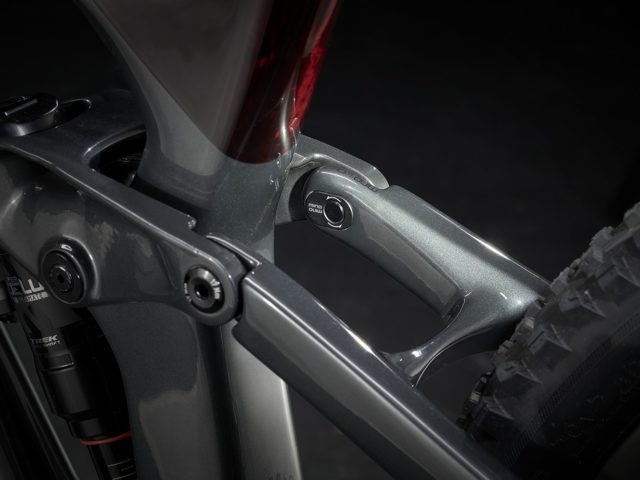
Combined with chainstays that didn’t change much (2 mm longer at 437 mm in the Low setting), all of that adds up to a longer, but not extremely long wheelbase: 1222 mm for a size M, 1243 mm for a size ML, and 1264 mm for a size L.
Just looking at the old Slash and comparing it to newer bikes, the most obvious difference in its geometry is probably its seat tube angle. With a 73.6° effective seat tube angle and 64.3° actual seat tube angle, the old Slash looks very different than the numerous bikes of today with seat tube angles approaching (or even reaching) 80°.
The 2021 Slash’s seat tube still has a significant “kink” in it, keeping its actual seat tube angle quite slack at 66.6°, but its effective angle has gotten almost 2° steeper, with Trek claiming 75.6° with the saddle height at 750 mm. That’s still notably slacker than a lot of bikes these days, and given the very slack actual angle, this may still present some issues for people who need to run very long droppers. But we’re curious to see just how noticeable that seat tube angle actually is.
All in all, the new Slash features pretty much all the geometry changes you’d make if you wanted to make a bike more stable at speed and in steep terrain, and more comfortable on steep climbs. Other brands have taken those changes even further and others have been more conservative, with the new Slash sitting roughly around the middle of the pack for a bike in this class.
As for sizing / fit, the 2021 Slash adds an “ML” size to the lineup, which will be great news to people like me and Noah, who were split between the fairly large sizing gap between the M and L sizes on the old Slash. With reach numbers ranging from 425 mm on a size S to 516 mm for a size XL, the 2021 Slash should work for a wide range of riders. Like most bikes (but increasingly, not all), the 2021 Slash’s chainstay length is the same across all sizes, which may be something to consider for riders at the upper and lower end of the sizing spectrum, but having equal-size chainstays across all sizes is still pretty much the norm these days.
For reference, here’s the full geo chart for the 2021 Slash:
FULL REVIEW
We received and built up the Slash 9.9 X01 on September 1st, and Luke Koppa got a few days on it before passing it off to Dylan Wood and Eric Freson, who now add their thoughts after riding it for a few months.
Geometry and Fit
Luke Koppa (5’8”, 155 lbs / 173 cm, 70 kg): At my height, I slot right around the middle of Trek’s recommended range for the size ML we’ve been testing. Unsurprisingly, the bike immediately felt comfortable to me.
I didn’t have any complaints about the Slash’s seat tube angle being too slack, though I admittedly tend to be a bit less sensitive to that than some other folks. The main thing I noticed on the uphill in terms of geometry was that the 2021 Slash does feel like a pretty long and slack bike in tight and / or steep sections. Compared to the shorter and steeper size Medium Specialized Enduro 27.5 and size Large Rocky Mountain Instinct BC I’ve been riding, the size ML Slash’s front wheel felt a bit more difficult to keep planted in steep spots and it required more physical input on my end to maneuver the bike over / around obstacles. This didn’t come as any surprise to me, and at least so far, seemed like nothing out of the ordinary for a bike with the Slash’s geometry.
And the good news is that, on the descent, I basically had no complaints about the geo of the Slash. It just felt nice — plenty slack in steep terrain, and once I got even just a bit of speed going, it didn’t feel excessively long or cumbersome.
Dylan Wood (5’11”, 155 lbs / 180 cm, 70 kg): The size ML Slash’s fit and geometry did not take very long to get used to, despite the fact that Trek actually recommends a size L for someone my height. At 5’11” / 180 cm, I am in the middle of the sizing range for a size L Slash, and I’m technically just outside of the recommended height range for the size ML we’ve been riding.
That said, the ML Slash’s geometry numbers are actually quite similar to the size Large Santa Cruz Megatower I’ve been spending a lot of time on, which is probably why the ML Slash has felt so familiar to me. Given that Trek technically recommends a size Large for me, it’s worth keeping in mind that the ML size I’m talking about might feel a bit shorter and snappier than a size L that many people my height may end up riding.
I agree with Luke that the Slash is indeed a pretty long bike and that length is noticeable on tight and / or steep climbs. Due to its slack front end, long wheelbase, and likely the not-super-steep seat tube angle, the Slash’s front wheel tends to wander a bit on technical climbs and is moderately difficult to keep weighted. This happens on most bikes this slack and long, though I think it might be slightly less of an issue with a steeper seat tube angle.
Regarding that seat tube angle, the pedals feel a bit further forward on the Slash than I’d prefer. I do run a fairly high seat height (78 cm), which results in the seat being further back due to the “kink” in the seat tube (more so than someone like Luke with shorter legs). To help combat this, I slid the Slash’s seat all the way forward on the rails and it made a significant improvement to my pedaling position. Personally, I wish Trek would’ve made the seat tube angle steeper on the Slash, though I also don’t think it is reason enough to steer anyone away from buying a Slash. Just something to keep in mind, particularly if you climb up a lot of very steep trails and / or have very long legs (and will therefore be running a longer dropper post).
Eric Freson (5’10”, 165 lbs; Ape Index +1.5; Inseam 31″): Not a ton of new to add here!
I also got along well with the fit of the ML Slash. Like Dylan, I found myself moving the seat all the way forward on the seat rails to effectively steepen the seat tube angle a touch. But I do this on most bikes I ride, since I often find myself sizing up on frames and am typically on the smaller side for their intended sizing. Moving the seat forward gives me a slightly shorter cockpit when seated.
When it comes to the geometry, the biggest standout for me with the Slash is actually the “ML” sizing option. As someone who is often right on the line between Medium and Large frame sizes, and who wants to always feel like I have the best tool for the job, the Goldilocks “just right” option of a ML frame has a ton of appeal for me. I just like the warm fuzzy feeling I get when I think about how Trek made a size just for “me” (and every other 5’9 to 5’11 person who wants to feel cool by going up a frame size but worries about seat / body / reach positioning). The jumps between sizes on the Slash aren’t really smaller than average, but a size that’s targeted between a lot of bikes’ Medium and Large offerings is welcome for me.
To echo what the others have said, the cockpit of the Slash does feel fairly long and stretched when seated. When climbing, the front wheel would sometimes feel light and prone to wandering. In particular, climbing tight switchbacks required an extra degree of focus on body positioning to stay balanced and keep the front wheel planted.
Climbing
Luke Koppa: On the uphill, the 2021 Slash’s suspension feels to me like it falls into the “great traction, not super efficient” category. There’s a noticeable amount of pedal bob, particularly when out of the saddle — not as wallow-y as the 2019 Specialized Enduro 27.5 or Stumpjumper, but not as firm as the Revel Rail. I found myself preferring to lock out the shock for the smoother sections of climbs, but when I left it open, I did appreciate the noteworthy lack of wheel slip on very loose, chunky sections. For reference, I’m 5’8”, 155 lbs / 173 cm, 70 kg and had the rear shock’s sag set around 27% and the fork’s around 16%.
I kept the shock’s 3-position LSC adjustment in the middle “0” setting during my first few rides, but I ended up using the shock’s “+” setting for most singletrack climbs since it seemed to strike a more preferable balance of pedaling support and traction. For super loose climbs where I wanted all the traction I could get, I’d leave the shock open and in the “0” setting. And for smooth road climbs, I’d just fully lock it out. Overall, I think the Slash climbs just fine for a long-travel bike, but it’s definitely not as snappy on the pedals compared to some of the best options in this travel class (e.g., Revel Rail and Ibis Ripmo).
Dylan Wood: I agree with Luke here. The Slash is an average climber for its class and should satisfy most riders who have been happy pedaling ~160mm-travel bikes in the past (i.e., those who prioritize going fast on the descent, not the uphill).
I am similarly content with the amount of traction that the Slash’s rear end provides on the way up — it feels active while pedaling over rough sections of trail. I occasionally used the lockout switch to firm up the shock, mostly on smooth roads and on some smoother singletrack. Like Luke, I also appreciated the option to switch the rear shock into the “+” LSC setting, which added a little more pedaling support without feeling like it was fully locked out and / or significantly reducing rear-wheel traction. Overall, the Slash climbed just about as I’d hoped it would, feeling basically on par with the Santa Cruz Megatower in terms of overall pedaling performance.
Eric Freson: Another vote for “average climber for its class and intended use.” I was pleased with the pedaling platform and traction available when going uphill on the Slash. The climbing position, (taking into account the somewhat-slack seat tube angle, very wide bars, and large reach), was for me the largest culprit in its average-feeling climbing prowess. The Slash just doesn’t really put me in a position over the bike to encourage me to attack the trail on the way up.
An aspect of the bike’s climbing ability that really stood out to me was just how firm the lockout feature was on the RockShox Super Deluxe Ultimate Thru Shaft shock. As someone who habitually reaches for this lever whenever I’m given the option, I frequently found it to be firmer than I was looking for on rougher, more technical climbs, and consequently could have a negative impact on available traction. It’s impressively firm, but this also meant that I found myself using it less than I might on a different bike. The pedaling efficiency of the Slash (and the ability to easily adjust the LSC settings) made this no big deal, but it was something that felt different than the norm for this class of bike.
Descending
Luke Koppa: As I think should be the case with a bike like this, I immediately started loving the Slash more and more as soon as I got to head downhill. Compared to the size Large Rocky Mountain Instinct BC and size Medium 2019 Specialized Enduro 27.5, the size ML Slash felt notably less prone to getting knocked off-line. And despite it being a totally new bike to me, I very quickly felt comfortable carrying as much, or very likely more speed on the Slash than I would have on those other bikes. The fact that the Slash is more stable is no shocker (given its longer and slacker geo), but I do think the seemingly non-existent adjustment period I had is noteworthy.
The standout characteristic of the Slash during my time on it was how calm and well-damped the entire bike felt while riding fast through rocky and rooty sections. Both the ZEB up front and Super Deluxe Thru Shaft out back did a great job of muting out small and medium-sized chatter. And I think some of that damped feel might also come from the Slash 9.9 X01’s carbon Bontrager rims and bar, but I can’t say for sure. The smooth, almost “deadened” ride of the Slash 9.9 X01 reminded me of a 2019 Specialized Enduro 29 I rode with an Ohlins coil shock, Roval Traverse carbon rims, CushCore inserts, and DH-casing tires.
Dylan Wood: Once I point the Slash downhill, the miles I climbed to the top all start to become worth it. Despite being a long-travel bike that was at least partially designed with racing in mind, the Slash has been a blast to ride on many different types of trails and I believe a wide variety of riders will get along with its handling and ride feel.
The Slash felt very composed while going fast through rocky sections, and it seemed like it wanted to go exactly where I was looking. The big wheels and smooth suspension let me carry plenty of speed, while its generally stable and composed ride allowed me to confidently keep off the brakes without feeling like I was on the edge of control. I agree with Luke in that the Slash felt extremely intuitive from the very first ride — it felt as natural as if I’d been on it for a month.
To me, the standout quality of the Slash was the reliable traction it provided across pretty much all scenarios. Trek’s ABP rear suspension layout, the tune on the rear shock, the RockShox ZEB up front, and the Bontrager tires all combined to ensure that the wheels stayed pressed to the ground and headed in the right direction when I needed them to. Particularly in rough, steep sections and when slowing down to make a corner, the Slash felt stiff enough to be precise, but the suspension did a great job of staying active and smooth. Like Luke, I also found that the Slash did a great job of staying on line in off-camber sections, with minimal effort required to keep its wheels from getting knocked off track.
In addition to rough and steep terrain, I’ve also spent a significant amount of time on the Slash riding bike-park style trails with jumps and berms. While I am no Kade Edwards, I had no problem getting the size ML Slash into the air and throwing it sideways. The Slash was a ton of fun on machine-built jump and flow trails (particularly when using its shock’s “+” setting), and it would make a ton of sense for those who often find themselves riding lift-accessed bike park trails.
One of my few complaints with the Slash is that it occasionally felt a little overwhelmed on fast g-outs and especially hard hits. I would describe the Slash as feeling pretty forgiving overall, whereas a bike like the Santa Cruz Megatower (which strikes us as more racing-oriented) felt more supportive. That said, I would be curious to try adding a volume spacer to the Slash’s rear shock to see if it could make it feel more supportive during big hits, without seriously compromising its supple feel over smaller trail chatter. In its stock form, I think the Slash 9.9 X01’s suspension setup will feel really nice to those who prioritize small-bump sensitivity, while those who instead prioritize support for big hits may want to experiment with the settings a bit.
I think the Slash is a great option for riders who will be riding a variety of terrain as well as the occasional Enduro or casual Downhill race. But for those who are purely concerned with riding as fast and hard as possible on their long-travel Trail / Enduro bike, I think there are some better (and probably less versatile) options out there. And of course, the Slash is a 160mm-travel bike, so if you ride trails that are mostly smooth and / or not very consistently steep, a shorter-travel bike would make more sense.
Eric Freson: I’d piggyback on most of what Dylan said, and his summary of the Slash captures my feelings well. A couple things that stand out to me specifically:
The Slash is a stiff bike, and feels like a precise descender. It’s also a bike that wants you to get it up to speed quickly and keep it there, rather than gaining and shedding momentum frequently (i.e., steep and sustained descents, rather than undulating ones). The bike feels very, very composed at speed, and given that, I found myself letting off the brakes and carrying speed through a lot of rough sections of trail where I might otherwise be inclined to slow down and pick my way through. Conversely, getting it up to speed, or back up to speed, was more work on the Slash than some other bikes in this category that I’ve ridden (e.g., Revel Rail 27.5).
It did take me a bit to dial in the sag of the Slash’s rear shock and find exactly where I wanted to leave it. The smooth and controlled damping from the RockShox Super Deluxe Ultimate Thru Shaft shock made it a bit harder to pick out when settings were really off, and so it simply took a bit more time and a bit more attention to refine my ideal sag. I wouldn’t call this a problem — bracketing suspension settings just took a bit more time than average since the range in which it felt “good” was broad. The upside is that it was easy to find a combination of settings that felt at least good, it was just a bit tougher to find settings that felt truly, 100% ideal. But with my preferred settings dialed in, I have been very impressed by both the ZEB Ultimate fork and the RockShox Super Deluxe Ultimate Thru Shaft shock.
In contrast to my feelings about the long cockpit of the Slash while climbing, I really enjoyed the ample length when taking the Slash to the air. It helped me feel like I had a ton of room to adjust my body positioning once headed skyward, and also helped to slow down the bike’s response to those same body adjustments. As someone who isn’t most at home taking off features with big lips or significant “kick,” this large margin for error and forgiving nature was noticed and appreciated.
Finally, I can relate to Dylan’s experience with the Slash and its tendency to prioritize sensitivity and traction over outright support and bottom-out resistance. The Slash is a bike that feels smooth, and it’s going to help most folks feel comfortable and in control in most normal trail situations. I think for the vast majority of riders, the balance between sensitivity and support the Slash offers is going to be very appealing. The tune of the shock helps to inspire speed, stability, and confidence over normal trail noise and obstacles in a way that is highly impressive. But if you are a “pro” level rider or particularly aggressive, you may find yourself wishing for a bit more support from the Slash and might be better off on something else, such as the Santa Cruz Megatower, Guerrilla Gravity Gnarvana, or Privateer 161 (which we’ll be reviewing soon).
RockShox Super Deluxe Ultimate Thru-Shaft Rear Shock
Luke Koppa: I spent most of my time on the Slash with its shock set on the baseline “0” LSC setting and occasionally the firmer “+” setting.
The 0 setting worked pretty well for most trails and my riding style, just as it should, given that it’s the baseline setting. The Slash is a bike that is the most fun when the trail is at least somewhat steep, and the 0 setting felt great on nearly all the trails I rode that fit that criteria.
That said, on flowier, mellower trails I’d find myself wishing for a slightly firmer, more supportive platform for getting in quick pedal strokes and pumping, and the + setting pretty much gave me that. It wasn’t some night-and-day difference, but it was definitely noticeable. I felt like the rear end wasn’t wallowing / sinking quite as much, and given that the switch is so easy to flip, I’d change it to the + setting any time I knew the trail ahead was going to be fairly smooth and not wildly steep.
Overall, I personally really like the concept and execution of the 3-position LSC switch. I’m not someone who’s constantly tinkering with my suspension and opting to shell out a bunch of extra dough so I have one or two more dials to play with. Instead, I just want to quickly find the setting(s) that work well for me on most of my rides. With the Slash’s shock, I got along well with both the 0 and + settings (I didn’t ride any trails that I felt warranted the “–” setting), and it was extremely easy to switch between them. So for me, the Slash’s shock covers just about any adjustment I could want, though I could see certain people preferring a more traditional high-end shock with more fine-tuning options.
Dylan Wood: The shock on this bike is one of the highlights of the component spec for me, and makes it stand out from other long-travel 29ers. I have been running Trek’s recommended 175 psi (generated by their suspension calculator), and it results in 30% sag.
I really enjoyed the 3-position low-speed-compression settings on the shock. When I knew what was in store on a given trail, it was very easy for me to change the settings to match the terrain. Put it in “+” for a flowy trail, “–” for steep and rough, and “0” for a little of both. This swap is so easy to make, I would do it several times on rides where the terrain changes between transitions (e.g., Hartman Rocks in Gunnison). These adjustments make for an immediate change in the feel of the bike, especially the “+” setting. When I didn’t know what was coming up, putting it right in that middle “0” setting was my go-to, and it is a great set-it-and-forget-it setting for those who would prefer not to tinker with their bike.
Of course, as Luke alluded to, certain riders may want more adjustment options. From my perspective, I think about 90% of riders could get along great with the Trek’s 3-position LSC switch for all of their riding. But particularly for racers or just those who are extremely sensitive to their suspension settings, this relative lack of adjustability could be a drawback on the Slash.
As for the other features of the shock, the numbered rebound dial is a no-brainer that I think every shock and fork should have. It gives you 10 settings to choose from, which could mean you don’t have as many settings as some other high-end shocks, but we always felt like we were able to arrive at a rebound setting that felt good to us.
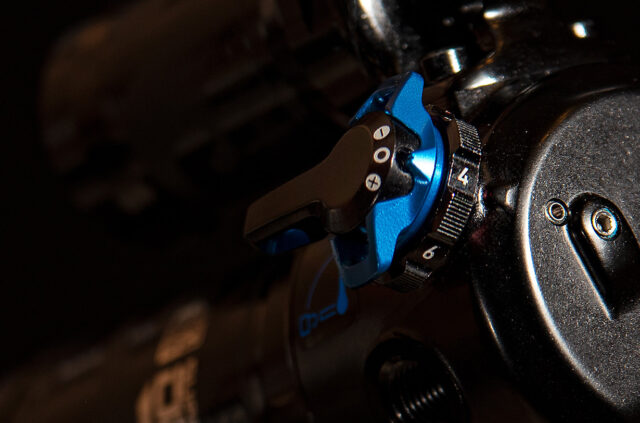
Overall, I think the Slash’s rear shock feels great as a whole and I have trouble finding anything I would personally change about it.
Eric Freson: I agree with everything said above. As someone who normally likes to try to set up his suspension to perform best in the aggregate, rather than fine-tune on a trail-by-trail basis, I appreciate how easy it is to make noticeable changes to the behavior of the rear suspension without needing to remember how many clicks of LSC and LSR I backed off two rides ago. It’s practical and functional — which encourages you to actually use it — and that is a hallmark of a good design in my book.
Bottom Line
Luke Koppa & Dylan Wood: Trek seems to have done a good job of accomplishing their two main goals with the Slash. It’s a long-travel bike that feels very stable, smooth, and forgiving on rough descents — just like an Enduro race bike should. But at the same time, it’s very intuitive, pedals pretty well, and can still be lots of fun on less-extreme trails and at less-extreme speeds — just like a Trail bike should.
The new Slash is not the most efficient long-travel bike on the climbs, and very aggressive Enduro racers may prefer an even longer, slacker, and / or more supportive platform at super high speeds. And of course, those who don’t frequently ride particularly steep, rough terrain would likely be better off on a shorter-travel bike. But unlike most bikes that excel either while climbing or descending at exceptionally high speeds, the Slash is a long-travel bike that feels very comfortable in a wide variety of scenarios.
Eric Freson: The Slash will encourage many riders to push harder and go faster any time they get to point it downhill. This is a bike that thrives in steep and rough terrain, but is accessible and approachable in a way that encourages its rider to stay off the brakes and let the bike do its thing. The most aggressive riders out there might find themselves wanting a bit more support out of the suspension, but the Slash is going to be plenty of bike for most people, and is impressively forgiving and versatile — a tradeoff that will work well for a whole lot of riders out there.

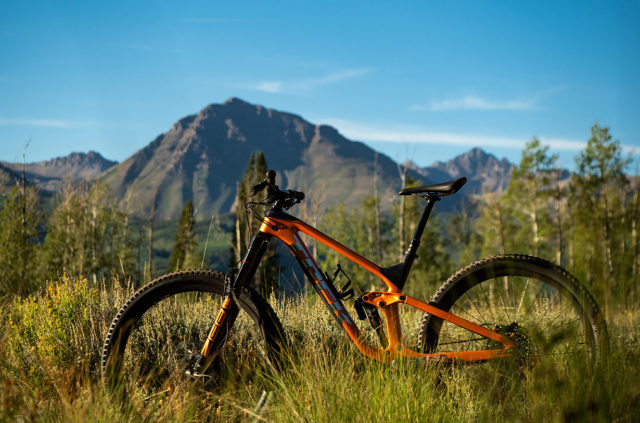
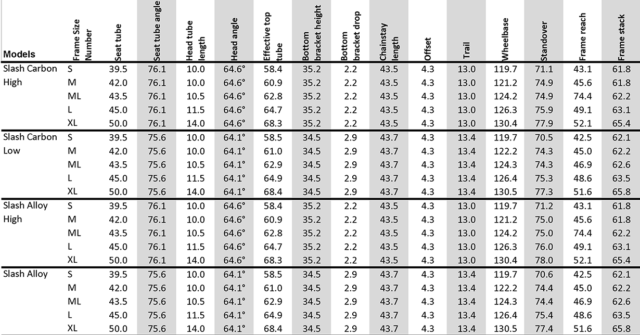
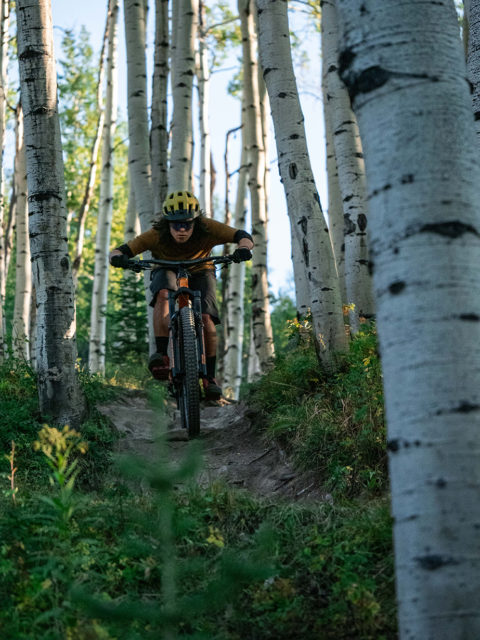
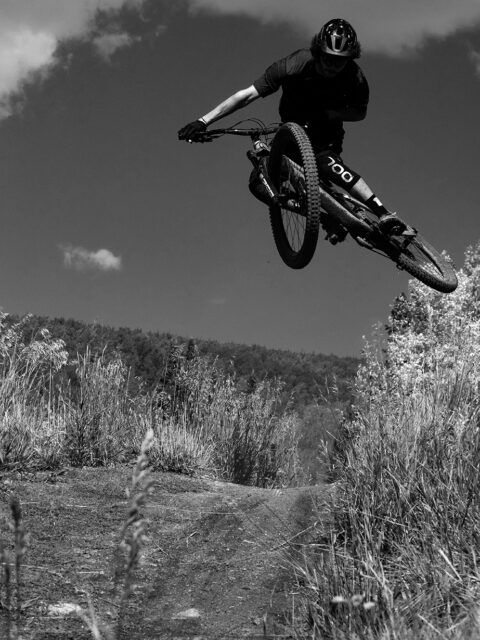
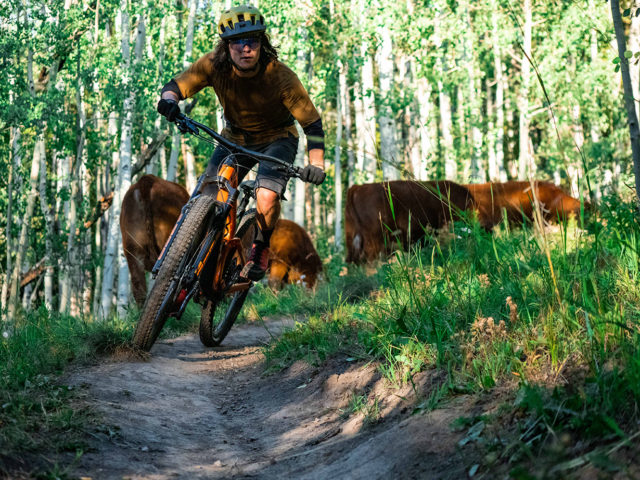
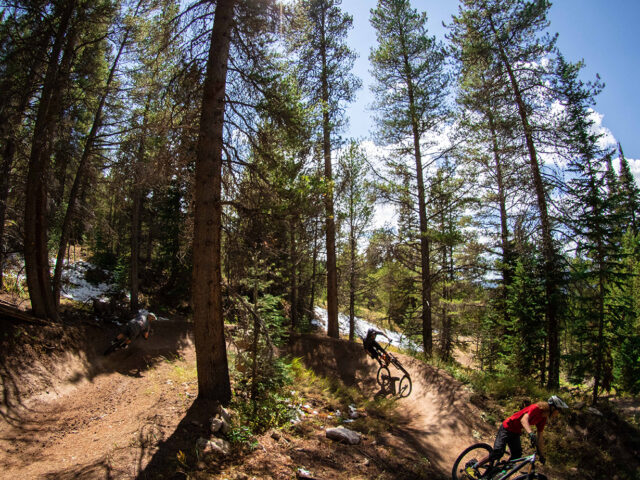
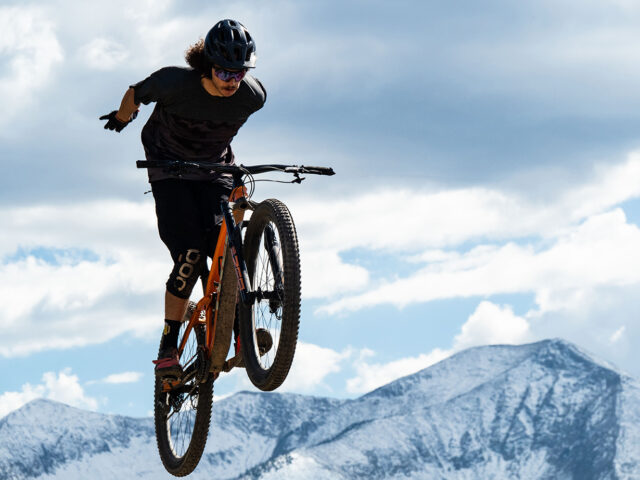
Good review. Big bike! IMO, a touch too far for rugged trail riding, but a ripping enduro machine, exactly as intended.
For now, I’ll stick with my “old” version. It’s funny how things change. When I bought that bike, most people said it was way too much for trail riding. Pure enduro race weapon only! I’ve found it to be an astounding all around rugged trail bike for chunky duty.
Thank you for this!
I was hesitant about the geometry of the M/L vs the M as I have always ridden L frames but found them too cumbersome with the M’s too unwieldy. At 5”10 210lbs I’m built more like a linebacker than a MTB’er, so the nimbleness of a M frame makes me nervous but the reach of a L makes for an uncomfortable ride.
I sprang for the Slash M/L and was a bit nervous about the immediately noticeable longer cock pit, but your characterization of the ideal rider for this bike suits me to a T!
I am definitely not a “Pro” and prioritize stability and control over support off of massive hits. This article has really made me feel I’ve made the right choice not just in bike but in sizing.
Thanks you gents!
Thank you for this, Scott! Here’s to many good rides ahead.